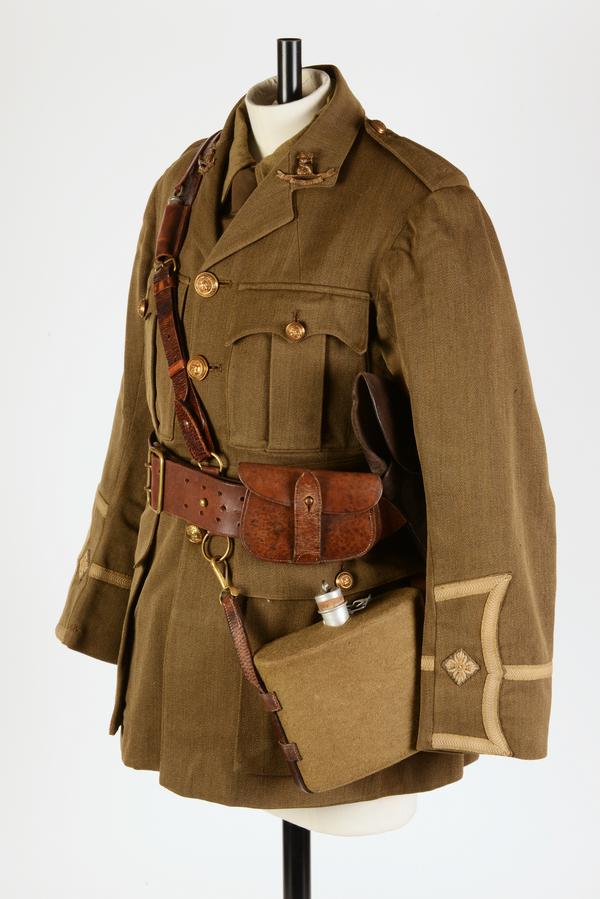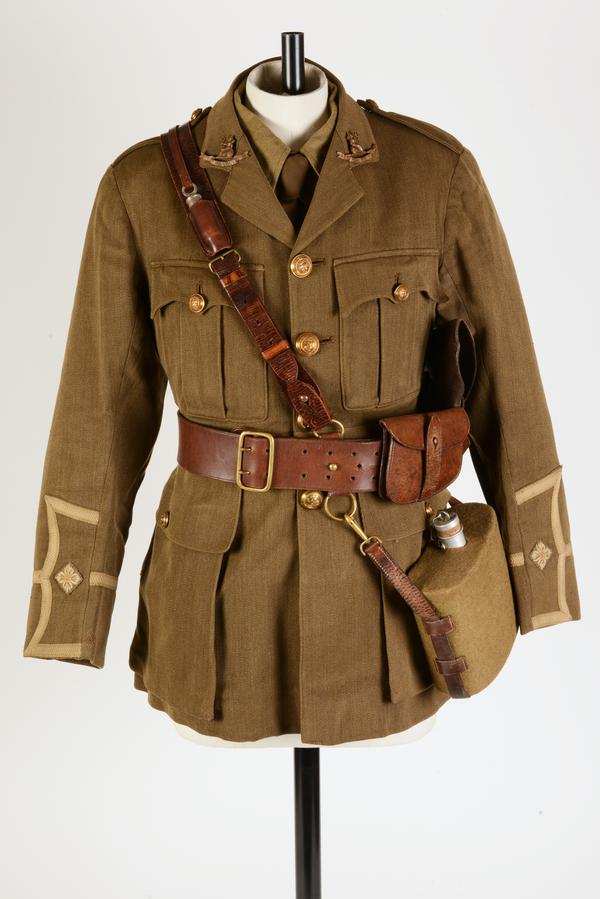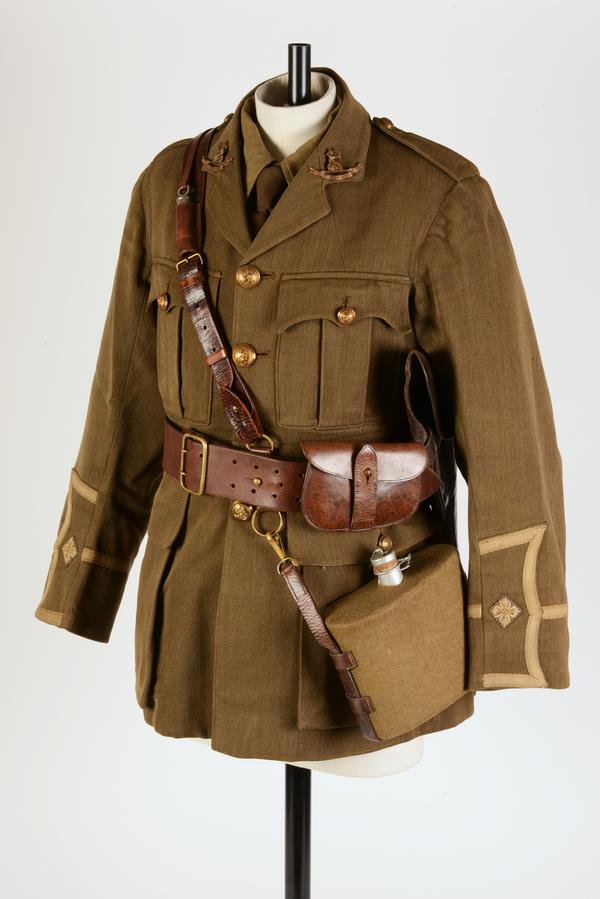Tunic
Accession Number NWHRM : 3485
Description
Service dress tunic of a 2nd Lieutenant. The sleeves of the jacket have the badge of rank of the lowest ranking commissioned officer, a 2nd Lieutenant. Some officers took to wearing tunics with the rank badges on the shoulder, as the cuff badges made them too conspicuous to snipers. This practice was frowned on outside the trenches but was given official sanction in 1917, as an optional alternative, being made permanent in 1920, when the cuff badges were abolished.
Read MoreTunic
This is a Service Dress tunic worn by a 2nd Lieutenant, the lowest ranking commissioned officer, during the First World War. Khaki Service Dress had become universal issue for the serving British Army in 1903, replacing the bright red tunics previously worn by most infantry units, as these had made them easy targets for enemy rifle fire. The badge of the 2nd Lieutenant's rank is visible on the cuffs of the sleeves. During the course of the war, some officers took to wearing their rank insignia on their shoulder straps instead, as the cuff markings had made them too conspicuous to snipers. This practice was initially frowned upon outside the trenches, but was given official sanction in 1917, and cuff badges were permanently abolished in 1920.
Junior officers like Lieutenants and 2nd Lieutenants led their troops in the field, exposing themselves to great danger as an example to their men. While some 12% of British Army soldiers who served in the First World War were killed, the percentage of officers was 17%. Overall, 6,288 officers and men of the Norfolk Regiment died during this devastating conflict.







